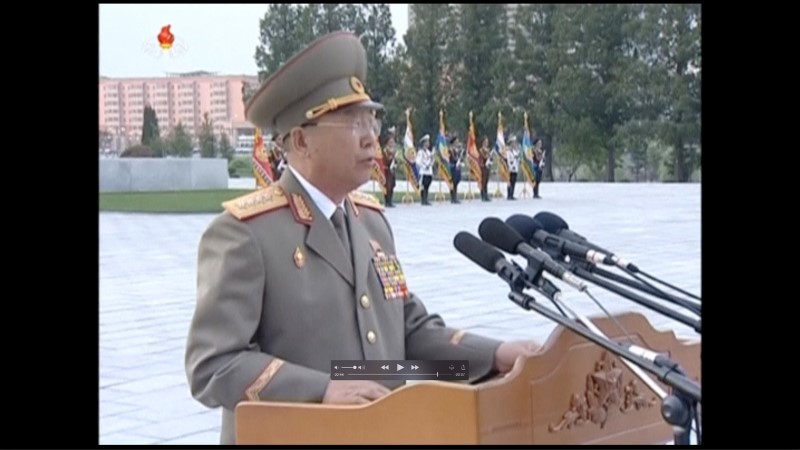
PAJU, South Korea (Reuters) – North Korea said it was kicking out all South Koreans from the jointly run Kaesong industrial zone on Thursday, calling the South’s move to suspend operations, in retaliation for Sunday’s rocket launch by the North, a “declaration of war”.
The North declared the industrial park, run by the rivals as a symbol of cooperation for more than a decade, a military control zone, the agency that handles its ties with Seoul said, according to the official KCNA news agency.
Dozens of South Korean trucks were already returning across the border earlier in the day, laden with goods and equipment, after the South said it was pulling out.
“Unpardonable is the puppet group’s act of totally suspending the operation in (Kaesong), finding fault with the DPRK’s H-bomb test and launch of a satellite,” the North’s Committee for the Peaceful Reunification of Korea said, referring to South Korea.
Isolated North Korea regularly dismisses the South as a puppet of the United States and just as regularly accuses both of acts of war against it.
DPRK is short for the North’s official name, the Democratic People’s Republic of Korea. North Korea tested what it said was a hydrogen bomb on Jan. 6 and on Sunday launched a rocket, putting a satellite into orbit.
The United States, Japan and South Korea said Sunday’s launch was a ballistic missile test, and like last month’s nuclear test, a violation of U.N. resolutions. The U.S. Senate voted unanimously in favor of tougher sanctions.
North Korea ordered South Koreans out of the zone by late afternoon, forbidding them to take anything other than personal belongings, KCNA said. South Korea said after the North’s announcement that its top priority was the safe return of all of its people.
Halting activity at the park, where 124 South Korean companies employed about 55,000 North Koreans, cuts the last significant vestige of North-South cooperation – a rare opportunity for Koreans divided by the 1950-53 war to interact on a daily basis.
North Korean workers were given a taste of life in the South at the complex, about 54 km (34 miles) northwest of Seoul, including snack foods like Choco Pies and toiletries that were resold as luxury items in the North.
They also rubbed shoulders with their managers from South Korea. Supporters of the project said that kind of contact was important in promoting inter-Korean understanding, despite concerns that Pyongyang might have used proceeds from Kaesong to help fund its nuclear and missile programs.
RISKS AND REWARDS
Except for Kaesong, both countries forbid their citizens from communicating with each other across the world’s most fortified frontier.
“We piled up instant noodles, bread and drinks in our warehouse so North Korean workers could come here and eat freely,” said Lee Jong-ku, who runs a firm that installs electrical equipment for apparel factories in Kaesong. “We don’t mind them eating our food, because we only care about them working hard.”
For the North, the revenue opportunity from Kaesong – $110 million in wages and fees in 2015 – was deemed worth the risk of exposing its workers to influences from the prosperous South. In recent years, North Koreans have had increasing access to contraband media, exposing them to life in the South and China.
Still, Pyongyang took precautions to ensure the workers it hand-picked for the complex had minimal contact with their South Korean managers that could be potentially subversive.
“These North Korean workers are strongly armed ideologically,” said Koo Ja-ick, who was waiting on the south side of the border on his way to Kaesong, where he has worked at an apparel company for the past four years.
“They never act individually. They always work and move in a group of two, even manager-level people do so. They never go to the bathroom by themselves – always in groups,” he said.
The average wage for North Korean workers at Kaesong was roughly $160 a month, paid to a state management company. The workers received about 20 percent of that in coupons and North Korean currency, said Cho Bong-hyun, who heads research on North Korea’s economy at IBK Bank in Seoul.
A South Korean government official involved in North Korea policy said it was difficult to see how operations could be resumed anytime soon at Kaesong, which opened in 2005.
Shares of several leading companies in the Kaesong zone plunged in Thursday trading, falling by nearly 10 percent or more. Defense shares, on the other hand, performed strongly.
Despite volatile North-South relations over the years, Kaesong had been shut only once before, for five months in 2013, amid heightened tensions following its third nuclear test. Its future had often seemed uncertain over the past decade.
(Additional reporting by Jack Kim in Seoul; Writing by Tony Munroe. Editing by Bill Tarrant and Nick Macfie)












